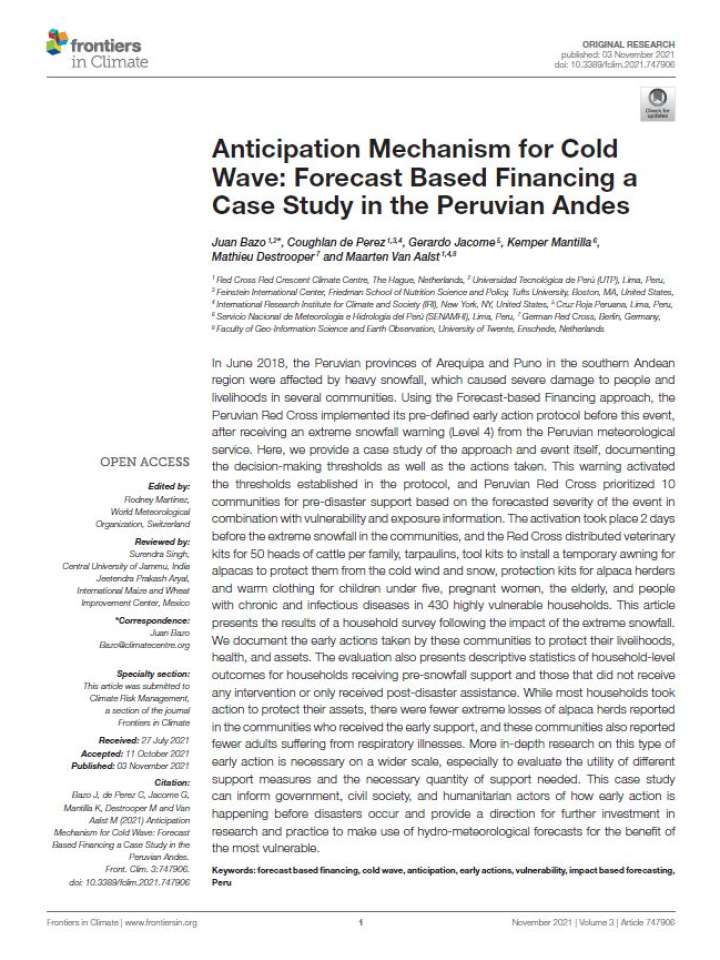Anticipation mechanism for cold wave: Forecast Based Financing a case study in the Peruvian Andes
In June 2018, the Peruvian provinces of Arequipa and Puno in the southern Andean region were affected by heavy snowfall, which caused severe damage to people and livelihoods in several communities. Using the Forecast-based Financing approach, the Peruvian Red Cross implemented its pre-defined early action protocol before this event, after receiving an extreme snowfall warning (Level 4) from the Peruvian meteorological service. Here, the authors provide a case study of the approach and event itself, documenting the decision-making thresholds as well as the actions taken. This warning activated the thresholds established in the protocol, and Peruvian Red Cross prioritized 10 communities for pre-disaster support based on the forecasted severity of the event in combination with vulnerability and exposure information.
This article presents the results of a household survey following the impact of the extreme snowfall. They document the early actions taken by these communities to protect their livelihoods, health, and assets. The evaluation also presents descriptive statistics of household-level outcomes for households receiving pre-snowfall support and those that did not receive any intervention or only received post-disaster assistance. While most households took action to protect their assets, there were fewer extreme losses of alpaca herds reported in the communities who received the early support, and these communities also reported fewer adults suffering from respiratory illnesses. This case study can inform government, civil society, and humanitarian actors of how early action is happening before disasters occur and provide a direction for further investment in research and practice to make use of hydro-meteorological forecasts for the benefit of the most vulnerable.
Explore further
